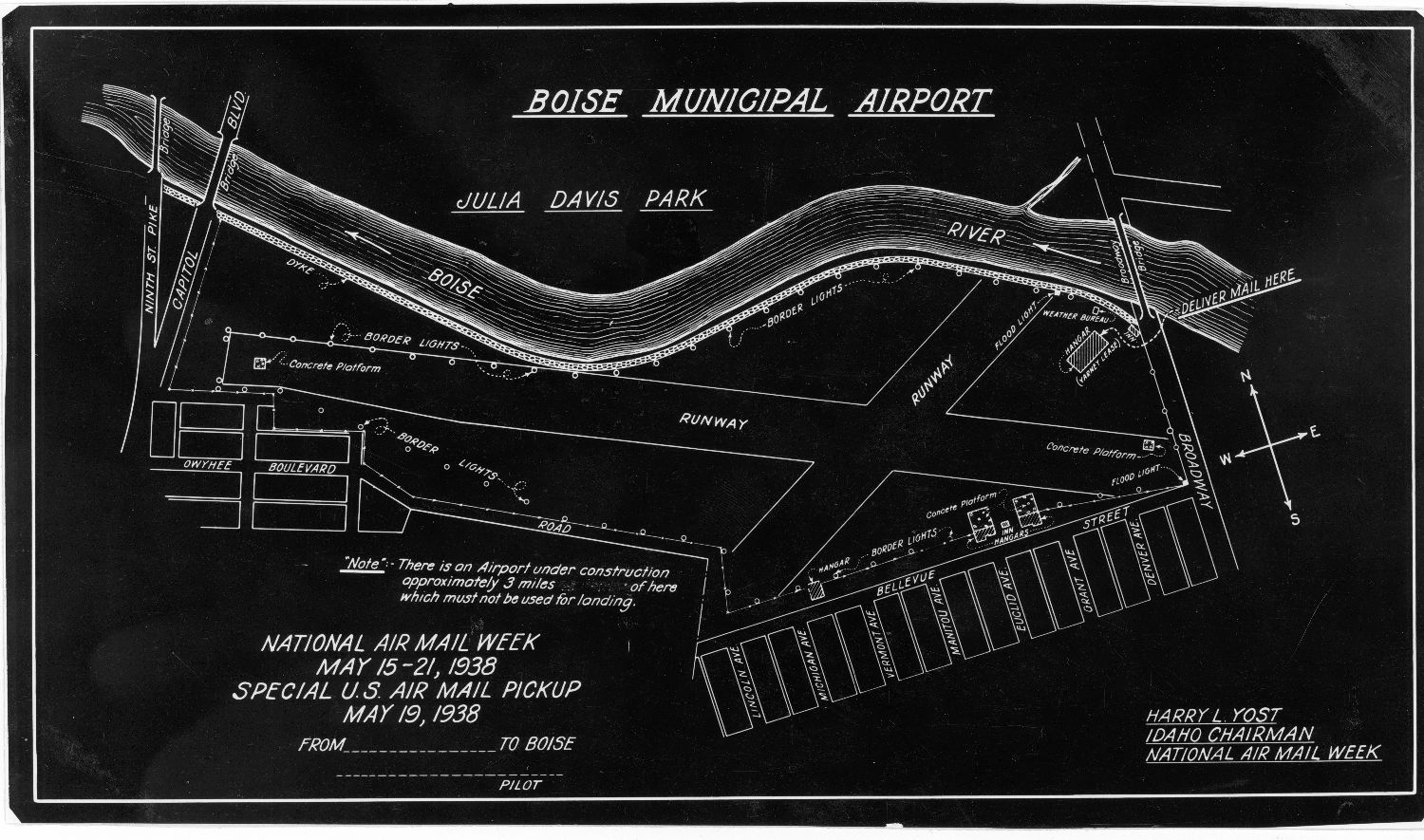Boise Junior College was built over Boise’s first airport.

In the early months of 1926, Walter T. Varney (who later founded United Airlines) bid for a city owned marshland on the Boise River to develop a landing strip for the first commercial airmail in the United States. The 40 wild acres of willow clumps, brush, trees, flood channels ten feet deep, and populated by animal life, was cultivated with the help of various volunteers, boy scouts, and veterans of the Civil War, Indian Wars, and Spanish-American War. The finished landing strip laid 2,000 feet long and 80 feet wide. For the inaugural flight, Varney hired Pilot Leon “Lee” Cuddeback to fly the first route on April 6, 1926. The flight was successful and Boise’s first airport and the United States’ first commercial airmail was established.
On September 22, 1938, the Boise Junior College Board of Trustees unanimously decided to apply to move the college to the airport. Their 5-year housing contract with the Episcopal Church to lease St. Margaret’s Hall ended on June 8, 1939. The airstrip was an ideal location due to space and accessibility for in-state and out-of-state students. The following year in November 1939, with the help of approved taxpayer bonds and student petitions, Boise Junior College successfully moved on to half of the airport and began renovations for the fall semester of 1940. By the end of 1939, air traffic operations moved to the airstrip to a new and larger location at Gowen Field.
The first construction on the airstrip was the Administration Building which held all of BJC’s classes, the library, laboratories, offices, and a large room for the student union. With the active airport moved to Gowen field, hangars were now available for purchase. The largest hangar was purchased for $600 from Johnson Flying Service and renovated into a gymnasium. The baseball and football fields were planted west of the gymnasium hangar. Smaller buildings were used for ceramic, auto, woodworking, machine and welding shops.
The old airport was still an active runway for private planes and military trainers. With BJC being a small school on a runway, airplanes often interrupted classes. The Student Union Building was placed on the west end of the runway. BJC taught ground and flight school to student pilots, and a semi-professional degree was offered to men from the ages of 18-25 starting in 1940 and ending in 1946. Classes included ground school, flight training, advanced flight school, and flight.
BJC also had several pilot’s clubs throughout the years:
- 1940 C.A.A. Pilots (Civil Aeronautics Authority)
- 1941 Pegasus Club
- 1943 C.A.A.W.T.S. (Civil Aeronautics War Training Service)
- 1967 Flying Club
- 1968 147 Flying Broncos
It was not until the 1950s, when the college constructed Bronco Stadium, that the need for additional space arose. BJC purchased the entire airstrip and built over the old runway, resulting in the campus’s straight layout.
Written by:
Annika Severts, spring 2018 intern